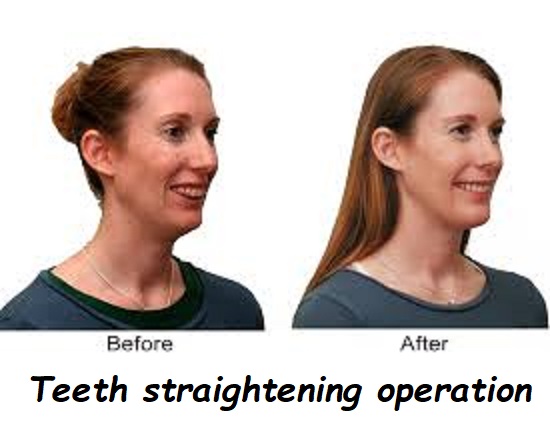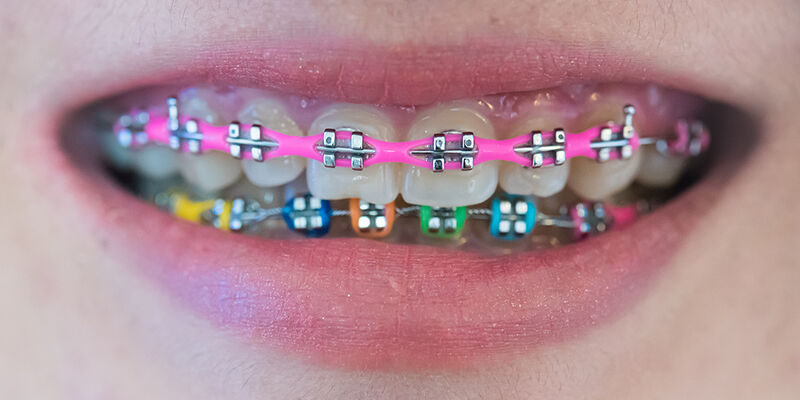teeth straightening operation

Teeth Straightening Operation: What You Need to Know
Teeth straightening operations, also known as orthodontic surgeries, are procedures designed to correct misaligned teeth and jaws. These surgeries are often recommended when traditional orthodontic treatments like braces or aligners are not sufficient to achieve the desired results. Let’s explore the different types of teeth straightening operations, what to expect, and how to prepare for and recover from the procedure.
Why Consider Teeth Straightening Surgery?
There are several reasons why someone might consider teeth straightening surgery:
- Severe Misalignment: When teeth are significantly misaligned, traditional braces or aligners might not be enough.
- Jaw Discrepancies: Issues like overbites, underbites, and crossbites that involve the jaw may require surgical intervention.
- Functional Problems: Misaligned teeth can cause difficulty in chewing, speaking, and maintaining oral hygiene.
- Aesthetic Concerns: Improving the appearance of your smile can boost self-esteem and confidence.
Types of Teeth Straightening Operations
There are several types of surgeries used to straighten teeth and correct jaw alignment:
1. Orthognathic Surgery
Orthognathic surgery, also known as corrective jaw surgery, is performed to correct irregularities of the jaw bones and realign the jaws and teeth to improve function and appearance. This surgery is often recommended for patients with severe jaw misalignment issues that cannot be corrected with orthodontics alone.
Procedures Included:
- Le Fort I Osteotomy: This surgery is used to correct upper jaw issues. The surgeon cuts and repositions the upper jaw.
- Bilateral Sagittal Split Osteotomy (BSSO): Used for the lower jaw, the surgeon splits the lower jaw and moves it forward or backward to align it properly.
- Genioplasty: This procedure reshapes the chin to improve facial symmetry and balance.
2. Dental Implants
Dental implants can be used as part of a teeth straightening plan, especially if teeth need to be extracted due to crowding or damage. Implants provide a stable foundation for replacement teeth and can help align the bite.
3. Corticotomy-Assisted Orthodontics
Corticotomy-assisted orthodontics involves making small cuts in the bone around the teeth to speed up the movement of teeth. This can be combined with traditional braces or aligners to achieve faster results.
4. Segmental Osteotomy
Segmental osteotomy involves cutting and repositioning segments of the jawbone to correct alignment. This surgery is less extensive than orthognathic surgery and is used for minor adjustments.
Preparing for Teeth Straightening Surgery
Preparation is key to a successful surgery and recovery. Here’s how you can prepare:
1. Consultation
- Orthodontist: Your orthodontist will evaluate your teeth and jaw alignment and discuss whether surgery is necessary.
- Oral Surgeon: A consultation with an oral surgeon will provide you with detailed information about the surgical procedure, risks, benefits, and recovery process.
2. Pre-Surgical Planning
- X-Rays and Scans: Detailed images of your teeth and jaws will be taken to plan the surgery.
- Medical History: Provide a complete medical history, including any medications you are taking and any underlying health conditions.
- Dental Impressions: Impressions of your teeth may be taken to create models for planning the surgery.
3. Lifestyle Adjustments
- Smoking: If you smoke, you should quit several weeks before the surgery to promote better healing.
- Diet: Your surgeon may recommend dietary changes to prepare your body for surgery and recovery.
The Surgery Day
Here’s what to expect on the day of your teeth straightening operation:
1. Anesthesia
- General Anesthesia: Most teeth straightening surgeries are performed under general anesthesia, meaning you will be asleep during the procedure.
2. The Procedure
- Duration: The length of the surgery will depend on the complexity of the procedure. It can range from a couple of hours to several hours.
- Surgical Steps: The surgeon will make incisions, reposition the bones or teeth, and secure them with plates, screws, or wires as necessary.
3. Post-Surgery
- Recovery Room: You will be taken to a recovery room to wake up from anesthesia and be monitored for any immediate post-surgical complications.
- Pain Management: Pain medication will be provided to manage any discomfort.
Recovery After Teeth Straightening Surgery
Recovery is a crucial part of the process. Here are some steps to ensure a smooth recovery:
1. Immediate Post-Surgery Care
- Rest: Rest is essential in the first few days following surgery. Avoid strenuous activities.
- Ice Packs: Apply ice packs to reduce swelling and manage pain.
- Follow-Up Appointments: Attend all scheduled follow-up appointments to monitor healing.
2. Dietary Changes
- Soft Foods: Stick to a diet of soft foods such as yogurt, applesauce, mashed potatoes, and smoothies for the first few weeks.
- Hydration: Drink plenty of fluids to stay hydrated.
3. Oral Hygiene
- Gentle Brushing: Brush your teeth gently with a soft-bristled toothbrush to avoid irritating the surgical site.
- Mouth Rinses: Use prescribed mouth rinses to keep the surgical area clean and reduce the risk of infection.
4. Pain Management
- Medications: Take prescribed pain medications as directed. Over-the-counter pain relievers may also be used.
- Cold Compresses: Continue using cold compresses to manage swelling.
Potential Risks and Complications
Like any surgical procedure, teeth straightening operations come with risks. Here are some potential complications:
- Infection: Infection at the surgical site is a risk, but can usually be managed with antibiotics.
- Nerve Damage: Temporary or permanent nerve damage can result in numbness or tingling.
- Relapse: There’s a possibility that teeth or jaws might shift back to their original positions over time.
- Bleeding and Swelling: Post-surgical bleeding and swelling are common but usually subside with time and proper care.
Long-Term Results and Maintenance
Achieving the desired results requires commitment to long-term care:
1. Retainers
Wearing retainers as directed by your orthodontist is crucial to maintaining the new alignment of your teeth.
2. Regular Dental Visits
Continue with regular dental check-ups to monitor your oral health and ensure the results are maintained.
3. Oral Hygiene
Maintain excellent oral hygiene to prevent dental issues that could affect the alignment of your teeth.
Conclusion: Is Teeth Straightening Surgery Right for You?
Teeth straightening surgery can offer significant benefits for those with severe dental and jaw alignment issues. It can improve function, appearance, and overall oral health. Consulting with your orthodontist and oral surgeon can help you determine if this procedure is the best option for your specific needs.
FAQs
Q: How long does it take to recover from teeth straightening surgery? A: Recovery time varies depending on the complexity of the surgery, but most people can return to normal activities within 2-4 weeks.
Q: Is teeth straightening surgery painful? A: You will be under anesthesia during the surgery, so you won’t feel pain during the procedure. Post-surgical pain can be managed with medications and typically subsides within a few days to weeks.
Q: Can adults undergo teeth straightening surgery? A: Yes, adults can undergo teeth straightening surgery. It’s often recommended for severe misalignment issues that cannot be corrected with orthodontics alone.
Q: Will my insurance cover teeth straightening surgery? A: Coverage varies by insurance plan. Check with your provider to see if orthodontic surgery is covered under your plan.
Q: Are there non-surgical alternatives for teeth straightening? A: Yes, traditional braces, clear aligners, and other orthodontic appliances can correct many alignment issues. Surgery is typically reserved for severe cases.
Additional Resources
For more information on teeth straightening surgeries and orthodontic treatments, check out these resources:
Considering teeth straightening surgery is a significant decision. By understanding the process, potential benefits, and risks, you can make an informed choice that best suits your needs.








